british
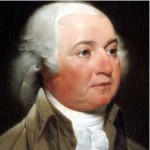
 In 1800, President John Adams approved legislation that appropriated $5,000 to purchase “such books as may be necessary for the use of Congress.” The initial collection of books, ordered from London, arrived in 1801. These were stored in the US Capitol. The books were the library’s first. The inaugural library catalog, dated April 1802, listed 964 volumes and nine maps. The library was President Adams’ pride and joy. In 1814, in what was a largely symbolic maneuver, the British entered Washington DC and burned down the capitol and the library. The fire was dramatic, but really had little relevance, because the city didn’t have an especially large population and, since much of the US government had fled before the British could overtake them, there was little strategic value in the destruction. Nevertheless, the about 3,000 books were lost in that fire.
In 1800, President John Adams approved legislation that appropriated $5,000 to purchase “such books as may be necessary for the use of Congress.” The initial collection of books, ordered from London, arrived in 1801. These were stored in the US Capitol. The books were the library’s first. The inaugural library catalog, dated April 1802, listed 964 volumes and nine maps. The library was President Adams’ pride and joy. In 1814, in what was a largely symbolic maneuver, the British entered Washington DC and burned down the capitol and the library. The fire was dramatic, but really had little relevance, because the city didn’t have an especially large population and, since much of the US government had fled before the British could overtake them, there was little strategic value in the destruction. Nevertheless, the about 3,000 books were lost in that fire.
The Library of Congress must seem like an institution that is unable to be defeated, but the reality is that while it has been there practically forever, acting as the nation’s biggest library, it has been almost destroyed three times. The Library of Congress is one of the largest libraries in the world, with over 170 million items in its collections at present, according to the Library of Congress itself. It possesses a world class collection of rare books and holds the largest known collection of audio recordings, maps, and films, among other materials. It is accessible not only to the Congressional representatives who work nearby in the Capitol, but also to all Americans and members of the public. That was not always the case, however. At its inception, the Library of Congress was for congressional use only.
Once the fires of the British died down, they left Washington, and the American lawmakers returned. As has always been the way of Americans, they knew it was time to rebuild. While Congress was putting itself back together, it became clear that most wanted the Library of Congress to return as well. At that point, former president Thomas Jefferson stepped in. He offered to sell his own library to reconstitute the one lost in 1814. It is certainly logical that Jefferson was one proposing such a deal. According to the Library of Congress, he was an avid book reader and lifelong learner with an extensive personal library. While he committed to the notion of an informed, intellectual Congress, Jefferson may have also empathized on a deeper level. In 1770, his own home had burned, and Jefferson, gazing at the ashes, most acutely felt the loss of his books. Later, he would come to possess the largest private library in the United States.
The Library of Congress faced at least three fires in its fight to exist. In fact, its existence as an institution has been challenged numerous obstacles throughout its more than 200 years of existence. The Library of Congress faced space shortages, understaffing, and lack of funding, until the American Civil War increased the importance of legislative research to meet the demands of a growing federal government. Then, in 1870, the library gained the right to receive two copies of every copyrightable work printed in the United States. It also built its collections through acquisitions and donations. Between 1890 and 1897, a new library building, which has now 
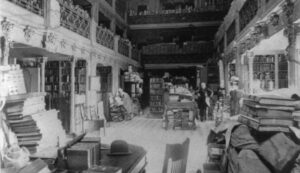 been renamed the Thomas Jefferson Building, was constructed. Two additional buildings, the John Adams Building (opened in 1939) and the James Madison Memorial Building (opened in 1980), were later added. In total, the Library of Congress has faced major fires at least three times in its history.
been renamed the Thomas Jefferson Building, was constructed. Two additional buildings, the John Adams Building (opened in 1939) and the James Madison Memorial Building (opened in 1980), were later added. In total, the Library of Congress has faced major fires at least three times in its history.
According to the United States House of Representatives, the 1825 fire occurred on the evening of December 22nd. Massachusetts Representative Edward Everett, who was leaving a nearby party, noticed a strange light coming from the library windows. When he informed a Capitol police officer, who did not have a key, Everett dismissed the situation. However, as the glow intensified, it became increasingly difficult to ignore. Eventually, more officers, along with Librarian of Congress George Watterson, discovered the dreadful truth: Library of Congress was on fire…again!!
Both representatives and firefighters fought the blaze, including’s fellow Massachusetts representative, Daniel Webster, and Tennessee politician Sam Houston. They extinguished fire before it spread to the rest of the Capitol. Ultimately, it was determined that the cause was a candle left lit in the room. The damage was not nearly as extensive as the 1814, though some books and a rug were lost.
On December 24, 1851, what is thought to be the most devastating fire destroyed 35,000 books, two-thirds of the library’s collection, and two-thirds of Jefferson’s original transfer. In 1852, Congress appropriated $168,700 to replace the books but not to acquire new materials. By 2008, the librarians of Congress had found replacements for all but 300 of the works documented as being in Jefferson’s original collection. This marked the beginning of a conservative period in the library’s administration under librarian John Silva Meehan and joint committee chairman James A. Pearce, who restricted the library’s activities. Meehan and Pearce’s views on limiting the Library of Congress’s scope were shared by members of Congress. As a librarian, Meehan and perpetuated the notion that “the congressional library should play a limited role on the national scene and its collections, by and large, should emphasize American materials obvious use to the US Congress.” In 1859, Congress transferred the library’s public document distribution activities to the Department of the Interior and its international book exchange program to the Department of State.
These days, the library is open for academic research to anyone with a Reader Identification Card. The library items may not be removed from the reading rooms or the library buildings. Most of the library’s general collection of books and journals are in the closed stacks of Jefferson and Adams Buildings. Specialized collections of books and other materials are in stacks in three main library buildings or stored off-site. Access to the closed stacks not permitted under any circumstances, except to authorized library staff and occasionally to dignitaries. Only reading room reference collections are on open shelves.
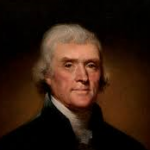
 Since 1902, American libraries have been able to request books other items through interlibrary loan from the Library of Congress, if these are not available elsewhere. Through this system, the Library of Congress has served as a “library of last resort,” according to former librarian of Congress Herbert Putnam. The Library of Congress lends books to other libraries with the stipulation that they be used only inside the borrowing library. In 2017, the Library of Congress began development of a reader’s card for children under the age of sixteen.
Since 1902, American libraries have been able to request books other items through interlibrary loan from the Library of Congress, if these are not available elsewhere. Through this system, the Library of Congress has served as a “library of last resort,” according to former librarian of Congress Herbert Putnam. The Library of Congress lends books to other libraries with the stipulation that they be used only inside the borrowing library. In 2017, the Library of Congress began development of a reader’s card for children under the age of sixteen.

 When my Aunt Sandy Pattan and I go to lunch, she will usually forego vegetables for a double portion of mashed potatoes. Her request will usually accompany her asking me if I know that she is Irish, and so the love of potatoes. Of course, I know that she is Irish, because she is my aunt, and I know about my own Irish ties through her side of the family. Nevertheless, I can’t say that I connected the Irish part with potatoes. So, I decided to do a little research to find our why “the Irish like potatoes” as my aunt says. In my research, I found probably the last thing I expected.
When my Aunt Sandy Pattan and I go to lunch, she will usually forego vegetables for a double portion of mashed potatoes. Her request will usually accompany her asking me if I know that she is Irish, and so the love of potatoes. Of course, I know that she is Irish, because she is my aunt, and I know about my own Irish ties through her side of the family. Nevertheless, I can’t say that I connected the Irish part with potatoes. So, I decided to do a little research to find our why “the Irish like potatoes” as my aunt says. In my research, I found probably the last thing I expected.
In the annals of Irish history, the potato transcends its role as a staple food; it embodies both prosperity and hardship. It was instrumental in supporting the population during times of expansion, yet it also played a pivotal role in one of Ireland’s most catastrophic episodes: the Great Famine. The story of the potato in Ireland  is a tale of how a single crop can influence the fate of a nation, weaving itself into the very fabric of the Irish cultural identity.
is a tale of how a single crop can influence the fate of a nation, weaving itself into the very fabric of the Irish cultural identity.
Few events in Irish history are as dark and devastating as the Great Hunger, also known as the Potato Famine. At that time, Ireland was a colony of Great Britain, which relied heavily on the country for potato production. However, in 1845, a devastating disease destroyed 75% of the potato crop, persisting for over five years. The local Irish population suffered the most. Estimates suggest that approximately one million Irish people died of starvation during the famine and another million emigrated. By the end of the famine in 1852, Ireland’s population had decreased by 25%. The British government faced criticism for its inadequate response, and the catastrophe fueled the drive for Irish independence. The Irish people felt that the British had not tried hard enough to take care of the people under their rule.
As often happens when a food item is no longer allowed or readily available, the Irish people loved their potatoes. The significance of the potato in Irish culture surpasses its agricultural importance, profoundly influencing culinary customs. It turned into a dietary mainstay, with creations like colcannon (mashed potatoes with kale or cabbage), boxty (potato pancakes) being a beloved dish in my Grandma Byer’s (Aunt Sandy’s mom) home, and Irish stew (potatoes, meat, and vegetables) becoming indispensable. These dishes were not 
 merely nourishing but also reflected the creativity and adaptability of Irish cooks who produced a variety of meals from a few ingredients. The simple yet hearty character of these potato-centric dishes mirrored the lives and struggles of ordinary people, ingraining these recipes in the heart of Irish cooking traditions. And with that, I feel like I now understand my aunt’s obsession with potatoes.
merely nourishing but also reflected the creativity and adaptability of Irish cooks who produced a variety of meals from a few ingredients. The simple yet hearty character of these potato-centric dishes mirrored the lives and struggles of ordinary people, ingraining these recipes in the heart of Irish cooking traditions. And with that, I feel like I now understand my aunt’s obsession with potatoes.
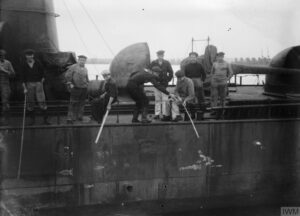
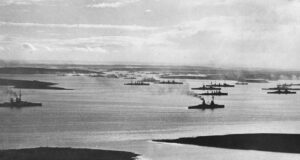 After the November 11, 1918 German surrender in World War I, the German fleet was interned at Scapa Flow under the terms of the Armistice of 11 November, while negotiations took place over its fate. There was talk of the fleet being divided between the Allied nations, and there were those who really wanted that, but this brought the fear that the British would seize the ships, and the Germans worried that if the German government at the time might rejected the Treaty of Versailles and resumed the war effort, the newly confiscated German ships could be used against Germany. Amid all the speculation, Admiral Ludwig von Reuter decided to scuttle the fleet.
After the November 11, 1918 German surrender in World War I, the German fleet was interned at Scapa Flow under the terms of the Armistice of 11 November, while negotiations took place over its fate. There was talk of the fleet being divided between the Allied nations, and there were those who really wanted that, but this brought the fear that the British would seize the ships, and the Germans worried that if the German government at the time might rejected the Treaty of Versailles and resumed the war effort, the newly confiscated German ships could be used against Germany. Amid all the speculation, Admiral Ludwig von Reuter decided to scuttle the fleet.
Scapa Flow was a naval base in the Orkney Islands in Scotland. When the German ships arrived, they had full crews and in all, there were more than 20,000 German sailors aboard, the number of sailors was reduced in the ensuing months. When the full fleet was at Scapa Flow, there were 74 ships there during negotiations between the Allies and Germany over a peace treaty that would become Versailles. The discussion was about what to do with the ships, since they didn’t really want Germany to have a full fleet ready, should they decide to wage war again. The French and Italians wanted a portion of the fleet, but the British wanted them destroyed. They were concerned about their own naval superiority, should the ships be distributed among the other Allied nations.
The Germans didn’t want their ships in the hand of their enemies, so Admiral Ludwig von Reuter began to prepare for the scuttling in May 1919, after hearing about the potential terms of the Versailles Treaty. Shortly before the treaty was signed on June 21, Reuter sent the signal to his men. The men began opening flood valves, smashing water pipes, and opening sewage tanks. As the scuttle was taking place, nine German crew members who abandoned ship and attempted to come ashore were shot by British forces. As the ships were being scuttled, the intervening British guard ships were able to beach some of the ships. In all, 52 of the 74 ships were sunk. While he wouldn’t say so out loud, British Admiral Wemyss was delighted that the ships were 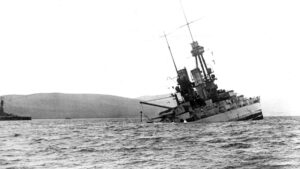
 sunk, because that meant they wouldn’t be distributed to the French and Italians navies. Since the scuttling, many ships have been refloated and salvaged in the years since. Nevertheless, some remain in the seas at Scapa Flow. Those that remain are popular diving sites and a source of low-background steel.
sunk, because that meant they wouldn’t be distributed to the French and Italians navies. Since the scuttling, many ships have been refloated and salvaged in the years since. Nevertheless, some remain in the seas at Scapa Flow. Those that remain are popular diving sites and a source of low-background steel.
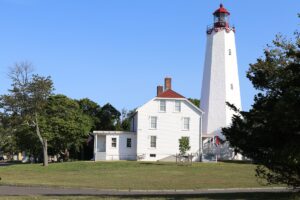 A lighthouse is by definition, a tall building set on the coast with a light in its tower to warn ships of the presence of dangerous rocks or shores. I have long loved lighthouses…their history, the ships they protected, and the place you find them. These days, there might not be as much need for lighthouses, because of GPS, but GPS can fail, computers can crash, and some solar activity can affect GPS too. There are lots of reasons why it can fail, so these days, lighthouses might be considered a…backup plan. You never know when they might be needed, and that is not the time to find out that you don’t have them.
A lighthouse is by definition, a tall building set on the coast with a light in its tower to warn ships of the presence of dangerous rocks or shores. I have long loved lighthouses…their history, the ships they protected, and the place you find them. These days, there might not be as much need for lighthouses, because of GPS, but GPS can fail, computers can crash, and some solar activity can affect GPS too. There are lots of reasons why it can fail, so these days, lighthouses might be considered a…backup plan. You never know when they might be needed, and that is not the time to find out that you don’t have them.
The lighthouse at Sandy Hook, in what is now New Jersey, was put in use on June 11, 1764. It was needed badly, and the Provincial Congress of New York orchestrated two lotteries to raise money for its construction. As with many projects, things moved slowly. The lighthouse was first suggested for Sandy Hook nearly a century before, but it was finally initiated by Colonial Governor Edmund Andros. It finally became a priority 43 New York merchants, lost 20,000 pounds of sterling from shipwrecks in  early 1761. Suddenly, it was really important. to protect those ships and their cargo. In the 27 months that the light house at Sandy hook stood, she had protected many ships.
early 1761. Suddenly, it was really important. to protect those ships and their cargo. In the 27 months that the light house at Sandy hook stood, she had protected many ships.
Then, on March 6, 1776, a committee of the New York Provincial Congress instructs Major William Malcolm to dismantle the Sandy Hook lighthouse. The territory was in dispute, and Major Malcolm’s task was to prevent the lighthouse from helping the British to reach New York City. The Congress wanted Malcolm to remove the lens and lamps so that the lighthouse could no longer warn ships of the rocky shore. Major Malcolm succeeded. Colonel George Taylor reported six days later that Malcolm had “given him eight copper lamps, two tackle falls and blocks, and three casks, and a part of a cast of oil from the dismantling of the beacon.” While the removal would most certainly mean the loss of ships and lives, it was deemed collateral damage, even if some of the ships were friendlies.
While the lighthouse removal was a success, it did not keep the British from invading New York. They were soon 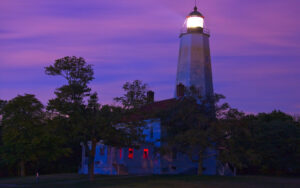 able to put the lighthouse back into service by installing lamps and reflectors. The Patriots attempted to knock the light out again on June 1, 1776, by placing cannon on boats and attempting to blow away the British equipment. They managed some damage before being chased away. The new states of New Jersey and New York bickered over ownership of the lighthouse, until the federal government assumed control of all US lighthouses in 1787. As of 1996, the Sandy Hook lighthouse, the oldest original lighthouse in the United States, passed into the jurisdiction of the National Park Service. I’m glad it survived all that turmoil. It would be sad if it was lost forever.
able to put the lighthouse back into service by installing lamps and reflectors. The Patriots attempted to knock the light out again on June 1, 1776, by placing cannon on boats and attempting to blow away the British equipment. They managed some damage before being chased away. The new states of New Jersey and New York bickered over ownership of the lighthouse, until the federal government assumed control of all US lighthouses in 1787. As of 1996, the Sandy Hook lighthouse, the oldest original lighthouse in the United States, passed into the jurisdiction of the National Park Service. I’m glad it survived all that turmoil. It would be sad if it was lost forever.
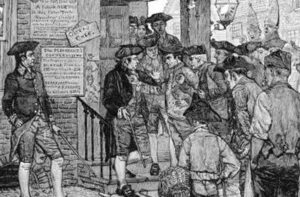
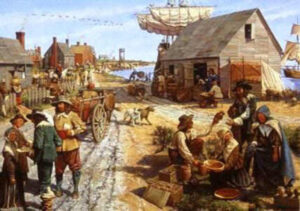 If you travel to a different area of the country or even other English-speaking areas of the world, you will find that here are different accents and even that words are used differently. Still, just because you are visiting or move to those places, doesn’t mean that you will immediately take on those accents, or their use of words. Nevertheless, when you move to a different region, your use of the language does immediately begin to evolve, whether you realize it or not, and whether it is intentional or not. The first Englishmen to set foot on American soil with the intent to colonize the land were no exception. The language began to evolve almost immediately….and it remains a fluid, almost living process to this day. “Americanisms” have been created or changed from other English terms to produce a language that very much differs from our forefathers, signifying our uniqueness and independence.
If you travel to a different area of the country or even other English-speaking areas of the world, you will find that here are different accents and even that words are used differently. Still, just because you are visiting or move to those places, doesn’t mean that you will immediately take on those accents, or their use of words. Nevertheless, when you move to a different region, your use of the language does immediately begin to evolve, whether you realize it or not, and whether it is intentional or not. The first Englishmen to set foot on American soil with the intent to colonize the land were no exception. The language began to evolve almost immediately….and it remains a fluid, almost living process to this day. “Americanisms” have been created or changed from other English terms to produce a language that very much differs from our forefathers, signifying our uniqueness and independence.
Of course, the people didn’t notice the changes right away, but by 1720, the English colonists began to notice that their language was quite different from that spoken in their Motherland. I’m sure they wondered just how that came to be? Basically, when you hear new “slang” words, and people don’t hear the accents spoken as well, the whole dynamic of the language changes. Also, very formal words like “thee, thou, and such” might become too cumbersome and so they are discarded. Everyone in the colonies knew that English would be our native language by 1790, because when the United States took its first census, there were four million Americans, 90% of whom were descendants of English colonists. So, it made perfect sense.
Nevertheless, it would not be the same as that spoken in Great Britain. The reasons are varied, but the most obvious reason was the sheer distance from England. The main way the language evolved was that over the years, many words were borrowed from the Native Americans, as well as other immigrants from France, Germany, Spain, and other countries. In addition, words that became obsolete “across the pond” continued to be utilized in the colonies. In other cases, words simply had to be created in order to explain the unfamiliar landscape, weather, animals, plants, and living conditions that these early pioneers encountered. By 1790 it was obvious that American English would be a very different language that British English.
The first “official” reference to the “American dialect” was made in 1756 by Samuel Johnson, a year after he published his Dictionary of the English Language. Johnson’s use of the term “American dialect” was not meant to simply explain the differences but rather, was intended as an insult. This “new” language was called “barbarous” and referred to our “Americanisms” as barbarisms. Because of the dissention between England and the Colonies, the British sneering at our language continued for more than a century after the Revolutionary War. They laughed and condemned as unnecessary, hundreds of American terms and phrases, but to our newly independent Americans, they were proud of their “new” American language and considered it to be another badge of independence. In 1789, Noah Webster wrote in his Dissertations on the English Language, “The reasons for American English being different than English English are simple…As an independent nation, our honor requires us to have a system of our own, in language as well as government.” In the eyes of the Colonists, that settled the matter, and when the United States was formed, the new nation was proud to be separated for the “Motherland” and would have it no other way.
Our leaders, including Thomas Jefferson and Benjamin Rush, agreed — it was not only good politics, but it was also sensible. The most atrocious changes to the British were the heavy use of contractions such as ain’t, can’t, don’t, and couldn’t. The feelings of the “rest of the world” didn’t matter to Americans, and the language changed even more during the western movement as numerous Native American and Spanish words became an everyday part of our language. The evolution of the American language continued into the 20th century and really continues even to this day. After World War I, when Americans were in a patriotic and anti-foreign mood, the state of Illinois went so far as to pass an act making the official language of the state the “American language.” In 1923, in the State of Illinois General Assembly, they passed the act stating in part, “The official language of the State of Illinois shall be known hereafter as the ‘American’ language and not as the ‘English’ 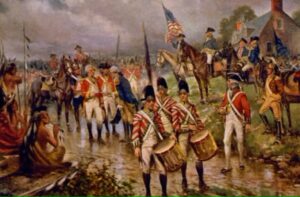
 language. A similar bill was also introduced in the US House of Representatives the same year but died in committee. Ironically, after centuries of forming our ‘own’ language, the English and American versions are once again beginning to blend as movies, songs, electronics, and global traveling bring the two ‘languages’ closer together.”
language. A similar bill was also introduced in the US House of Representatives the same year but died in committee. Ironically, after centuries of forming our ‘own’ language, the English and American versions are once again beginning to blend as movies, songs, electronics, and global traveling bring the two ‘languages’ closer together.”
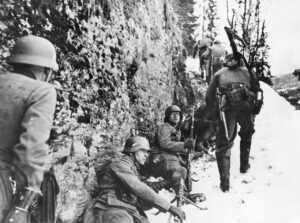 During the largely unsuccessful Norwegian Campaign of World War II, the Allies were in a fight to stop the Germans from fully occupying Norway, but it didn’t work in the end. The Norwegian campaign was carried out from April 8, 1940 to June 10, 1940, and involved the attempt by Allied forces to defend northern Norway coupled with the resistance of the Norwegian military to the country’s invasion by Nazi Germany.
During the largely unsuccessful Norwegian Campaign of World War II, the Allies were in a fight to stop the Germans from fully occupying Norway, but it didn’t work in the end. The Norwegian campaign was carried out from April 8, 1940 to June 10, 1940, and involved the attempt by Allied forces to defend northern Norway coupled with the resistance of the Norwegian military to the country’s invasion by Nazi Germany.
The Norwegian Campaign was planned as Operation Wilfred and Plan R 4, prior to the actual German attack, which the Allies knew was imminent, but had not yet happened. On April 4th, the battlecruiser HMS Renown set out from Scapa Flow for the Vestfjorden with twelve destroyers. The Royal Navy and the 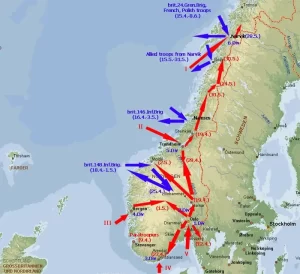 Kriegsmarine met at the First Battle of Narvik on April 9 – 10. The British forces conducted the Åndalsnes landings on April 13, thereby putting everything in place for the actual operation. Germany’s strategic reason for wanting Norway was to seize the port of Narvik and guarantee the delivery of iron ore needed for German steel production. In any war, steel is necessary for much of the weaponry.
Kriegsmarine met at the First Battle of Narvik on April 9 – 10. The British forces conducted the Åndalsnes landings on April 13, thereby putting everything in place for the actual operation. Germany’s strategic reason for wanting Norway was to seize the port of Narvik and guarantee the delivery of iron ore needed for German steel production. In any war, steel is necessary for much of the weaponry.
During one part of that campaign, in an air fight over Norway, a British fighter took down a German plane over a densely wooded area. Unfortunately, the British aircraft crashed as well. As it turns out, both crews survived the crashes, and while trying to get to a safe place, they encountered each other in the wilderness. In most situations, this could have been bad for one or both of the crews, but even though they were struggling against a language barrier, the rival airmen agreed not to turn on each other and instead, to team up in order to find 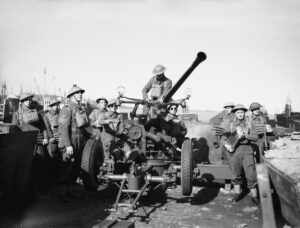 safety. They stayed in an abandoned hotel and shared breakfast. It wasn’t peace exactly, but they formed an uneasy truce, while they waited to see which side would show up to help first.
safety. They stayed in an abandoned hotel and shared breakfast. It wasn’t peace exactly, but they formed an uneasy truce, while they waited to see which side would show up to help first.
Instead of the British or the Germans, it was a Norwegian ski patrol that showed up to rescue the British soldiers, and of course, to take the Germans as POWs. While that one battle seemed to indicate that the British were headed for a victory over the Germans, that was not to be the case. The Germans did finally take over Norway in its entirety. Of course, as we all know, one battle is not a very good indication of who will win the war, and in the end, it was Germany that took a great fall, losing the entirety of World War II.
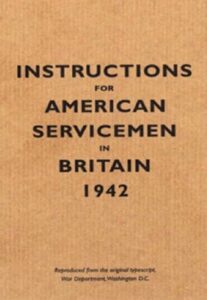
 In every branch of service, and every war, the US servicemen are given a handbook. The book is filled with useful information, meant to make the transition from civilian to soldier a successful one, even if it is not an easy one. No young civilian preparing to go to war really has a good idea of what they are getting into. I suppose more of them do these days, than their World War and prior wars era counterparts. Nevertheless, each of them is proceeding head on into a massive reality check. The handbook can be a sobering little book, especially when the new soldier reads the chapter that recommends the writing of a will. The need for a Last Will and Testament will become crystal clear when the soldier sees his (or her) first battle. The sight of dead bodies takes away any misconception the soldier might have of their own mortality, and the possibility that they may have been given a one-way ticket to this battle.
In every branch of service, and every war, the US servicemen are given a handbook. The book is filled with useful information, meant to make the transition from civilian to soldier a successful one, even if it is not an easy one. No young civilian preparing to go to war really has a good idea of what they are getting into. I suppose more of them do these days, than their World War and prior wars era counterparts. Nevertheless, each of them is proceeding head on into a massive reality check. The handbook can be a sobering little book, especially when the new soldier reads the chapter that recommends the writing of a will. The need for a Last Will and Testament will become crystal clear when the soldier sees his (or her) first battle. The sight of dead bodies takes away any misconception the soldier might have of their own mortality, and the possibility that they may have been given a one-way ticket to this battle.
While many of the things contained in the handbook are sobering and even quite scary for the soldiers, there are some things contained therein that have a much more practical usage, and a few that looking back, anyway, are just a little bit funny. One such tidbit contained in the US servicemen’s World War II handbook was the simple statement that, “The British don’t know how to make a good cup of coffee. You don’t know how to make a good cup of tea—it’s an even swap.” I suppose that statement is true, at least as it pertains to the fact that British “bad coffee” is an even swap with US “bad tea.” I don’t think they US government was trying to “bad-mouth” the Brits, but rather that they were simply stating a fact. If the men were in a British camp, they simply shouldn’t ask for a cup of coffee, because they would be sorely disappointed in what they were served.
Like the warning labels of items these days, like not to shower with a running blow dryer, or to shut off the engine before trying to remove the fan belt on your car, the point was to make the reader aware of the ramifications of making such bad choices. Still, some “warnings” make more sense than others…or do they? While the electricity problem of the wet running blow dryer and the finger removal outcome of putting one’s 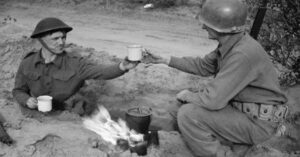 hand out to touch a fast-moving fan belt, seem like rather stupid wisdom (is there is such a phrase), the idea that a person would automatically make a bad cup of coffee, simply because they are British, seems equally ridiculous. Nevertheless, the US servicemen were warned to expect “bad coffee” from the British, so that they were prepared to either drink tea with the Brits, or swallow down the offending coffee so as not to offend the Brits. I’m sure that much of the rest of the handbook contained valuable information, but it is possible that the most valuable information contained in the World War II US servicemen’s handbook, was intended to avoid the notion that the Brit might have poisoned them with the British coffee.
hand out to touch a fast-moving fan belt, seem like rather stupid wisdom (is there is such a phrase), the idea that a person would automatically make a bad cup of coffee, simply because they are British, seems equally ridiculous. Nevertheless, the US servicemen were warned to expect “bad coffee” from the British, so that they were prepared to either drink tea with the Brits, or swallow down the offending coffee so as not to offend the Brits. I’m sure that much of the rest of the handbook contained valuable information, but it is possible that the most valuable information contained in the World War II US servicemen’s handbook, was intended to avoid the notion that the Brit might have poisoned them with the British coffee.
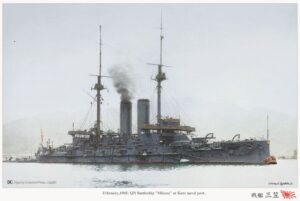 It is not usually my habit to talk about the spectacular ships built by our nation’s enemies, but IJN Mikasa might be a worthy exception. The Mikasa is a “pre-dreadnought” battleship built for the Imperial Japanese Navy (IJN) in the late 1890s and is the only ship of her class. I didn’t know what a “pre-dreadnought” ship was, so I looked into it. “Pre-dreadnoughts were battleships built before 1906, when HMS Dreadnought was launched. Dreadnoughts were more powerful battleships that followed the design of HMS Dreadnought and so made pre-dreadnoughts obsolete.” The ship displaced over 15,000 long tons, with a crew of over 800 men.
It is not usually my habit to talk about the spectacular ships built by our nation’s enemies, but IJN Mikasa might be a worthy exception. The Mikasa is a “pre-dreadnought” battleship built for the Imperial Japanese Navy (IJN) in the late 1890s and is the only ship of her class. I didn’t know what a “pre-dreadnought” ship was, so I looked into it. “Pre-dreadnoughts were battleships built before 1906, when HMS Dreadnought was launched. Dreadnoughts were more powerful battleships that followed the design of HMS Dreadnought and so made pre-dreadnoughts obsolete.” The ship displaced over 15,000 long tons, with a crew of over 800 men.
While she might not have been as powerful, IJN Mikasa was nevertheless a well-built ship, that was able to withstand more than most ships of her time. Named after Mount Mikasa in Nara, Japan, she served as the flagship of Vice Admiral Togo Heihachiro throughout the Russo-Japanese War of 1904–1905. That war included the Battle of Port Arthur, which occurred on the second day of the war, as well as the Battles of the Yellow Sea and Tsushima. Just a few days after the Russo-Japanese War ended, Mikasa’s magazine (a ship’s magazine is where the powder and shells are stored) suddenly exploded and sank the ship. The explosion killed 251 men. Shortly before the Mikasa’s fatal accident, the ship had been involved in the 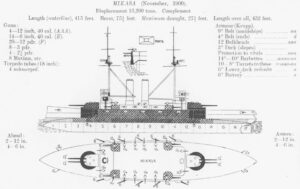 Battle of Tsushima (May 27, 1905), during which she had shrugged off over 40 shell strikes from heavy Russian naval guns! In that battle 113 of her crew were killed or injured. While such an event would usually mean the end of a ship, IJN Mikasa was salvaged, and while her repairs took over two years to complete, she went on to serve as a coast-defense ship during World War I, and she supported Japanese forces during the Siberian Intervention in the Russian Civil War. Ironically, in 1912 a despondent sailor among her crew tried to blow the ship up once again while the ship was anchored at Kobe. In the end the ship served until 1923, after being pulled up from the drink, repaired, and recommissioned.
Battle of Tsushima (May 27, 1905), during which she had shrugged off over 40 shell strikes from heavy Russian naval guns! In that battle 113 of her crew were killed or injured. While such an event would usually mean the end of a ship, IJN Mikasa was salvaged, and while her repairs took over two years to complete, she went on to serve as a coast-defense ship during World War I, and she supported Japanese forces during the Siberian Intervention in the Russian Civil War. Ironically, in 1912 a despondent sailor among her crew tried to blow the ship up once again while the ship was anchored at Kobe. In the end the ship served until 1923, after being pulled up from the drink, repaired, and recommissioned.
IJN Mikasa was decommissioned on September 23, 1923, following the Washington Naval Treaty of 1922. At that time, she was scheduled for destruction, but at the request of the Japanese government, each of the signatory countries to the treaty agreed that Mikasa could be preserved as a memorial ship. The agreement required that her hull be encased in concrete. On November 12, 1926, Mikasa was opened for display in Yokosuka in the presence of Crown Prince Hirohito and Togo. Unfortunately, the ship deteriorated under the 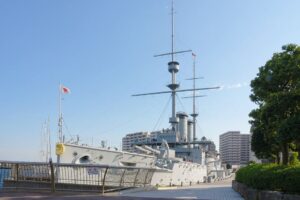 control of the occupation forces after the surrender of Japan in 1945. Finally, in 1955, American businessman John Rubin, who had formally lived in Barrow, England, wrote a letter to the Japan Times about the state of the ship. His letter served as the catalyst for a new restoration campaign. The Japanese public, who were widely onboard with the idea, supported the project, as did Fleet Admiral Chester W Nimitz. The ship was once again restored, and the museum version reopened in 1961. On August 5, 2009, IJN Mikasa was repainted by sailors from USS Nimitz, and she is now the only surviving example of a “pre-dreadnought” battleship in the world. IJN Mikasa is located in the town of its construction, Barrow-in-Furness, near Mikasa Street on Walney Island.
control of the occupation forces after the surrender of Japan in 1945. Finally, in 1955, American businessman John Rubin, who had formally lived in Barrow, England, wrote a letter to the Japan Times about the state of the ship. His letter served as the catalyst for a new restoration campaign. The Japanese public, who were widely onboard with the idea, supported the project, as did Fleet Admiral Chester W Nimitz. The ship was once again restored, and the museum version reopened in 1961. On August 5, 2009, IJN Mikasa was repainted by sailors from USS Nimitz, and she is now the only surviving example of a “pre-dreadnought” battleship in the world. IJN Mikasa is located in the town of its construction, Barrow-in-Furness, near Mikasa Street on Walney Island.
 In any war, there must be a nation’s first casualty. World War I could be no different. On March 28, 1915, the first American citizen was killed in the eighth month of World War I. The United States didn’t even enter the war until April 6, 1917. Nevertheless, Leon Thrasher, who was a 31-year-old mining engineer and a native of Massachusetts, drowned when a German U-Boat, the U-28 torpedoed a cargo-passenger ship the British RMS Falaba, a West African steamship, on which Thrasher was a passenger. The sinking became known as “The Thrasher Incident.” The RMS Falaba was on its way from Liverpool to West Africa, off the coast of England. Of the 242 passengers and crew on board RMS Falaba, 104 drowned. Thrasher was employed on the Gold Coast in British West Africa, and on March 28, 1915, he was on the RMS Falaba, as a passenger, returning to his post, following a trip to England.
In any war, there must be a nation’s first casualty. World War I could be no different. On March 28, 1915, the first American citizen was killed in the eighth month of World War I. The United States didn’t even enter the war until April 6, 1917. Nevertheless, Leon Thrasher, who was a 31-year-old mining engineer and a native of Massachusetts, drowned when a German U-Boat, the U-28 torpedoed a cargo-passenger ship the British RMS Falaba, a West African steamship, on which Thrasher was a passenger. The sinking became known as “The Thrasher Incident.” The RMS Falaba was on its way from Liverpool to West Africa, off the coast of England. Of the 242 passengers and crew on board RMS Falaba, 104 drowned. Thrasher was employed on the Gold Coast in British West Africa, and on March 28, 1915, he was on the RMS Falaba, as a passenger, returning to his post, following a trip to England.
The sinking, brought with it a claim from the Germans that the submarine’s crew had 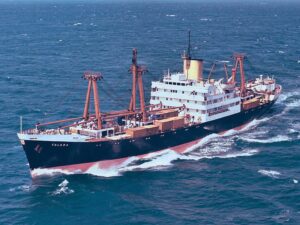 followed all protocol when approaching RMS Falaba. The Germans said that they gave the passengers ample time to abandon ship, and that they fired only when British torpedo destroyers began to approach to give aid to the Falaba. Of course, the British official press report of the incident disagreed, claiming that the Germans had acted improperly, “It is not true that sufficient time was given the passengers and the crew of this vessel to escape. The German submarine closed in on the Falaba, ascertained her name, signaled her to stop, and gave
followed all protocol when approaching RMS Falaba. The Germans said that they gave the passengers ample time to abandon ship, and that they fired only when British torpedo destroyers began to approach to give aid to the Falaba. Of course, the British official press report of the incident disagreed, claiming that the Germans had acted improperly, “It is not true that sufficient time was given the passengers and the crew of this vessel to escape. The German submarine closed in on the Falaba, ascertained her name, signaled her to stop, and gave 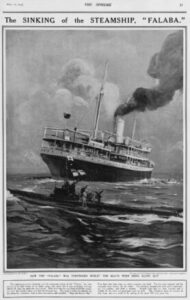 those on board five minutes to take to the boats. It would have been nothing short of a miracle if all the passengers and crew of a big liner had been able to take to their boats within the time allotted.”
those on board five minutes to take to the boats. It would have been nothing short of a miracle if all the passengers and crew of a big liner had been able to take to their boats within the time allotted.”
The sinking of RMS Falaba, and Thrasher’s subsequent death, was mentioned again in a memorandum sent by the US government, which was drafted by President Woodrow Wilson himself and addressed to the German government after the German submarine attack on the British passenger ship Lusitania on May 7, 1915, in which 1,201 people were drowned, including 128 Americans. President Wilson’s note was clearly a warning, calling for the US and Germany to come to a full and complete understanding as to the grave situation which had resulted from the German policy of unrestricted submarine warfare. In response to the warning, Germany abandoned the policy shortly thereafter. However, the policy abandonment was reversed in early 1917, and that was the final straw that put the United States into World War I on April 6, 1917.
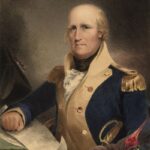
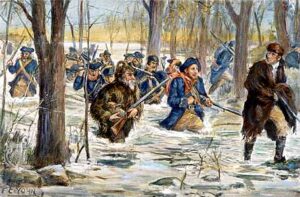 The British tried very hard to keep the United States colonies of Great Britain. The odds were in their favor, but they badly misjudged the determination of the early pioneers of this country. The Revolutionary War would bear that out. On February 5, 1779, George Rogers Clark departed Kaskaskia on the Mississippi River with a force of approximately 170 men, including Kentucky militia and French volunteers. Their goal was to take Fort Sackville (Fort Vincennes, at that time), British garrison under Lieutenant-Governor Henry Hamilton. The men traveled across what is now the state of Illinois, a journey of about 180 miles, much of it covered by deep and icy flood water until they reached Fort Sackville at Vincennes, in what is now Indiana. They reached the Embarras River on February 17th, placing them only 9 miles from Fort Sackville. Unfortunately, the river was too high to cross there, so they followed the Embarrass River down to the Wabash River, where the next day they began to build boats. Moral was low, because they had been without food for the last two days, and Clark struggled to keep his men from deserting. Clark later wrote that “I conducted myself in such a manner that caused the whole to believe that I had no doubt of success, which kept their spirits up.” He really had no choice, no matter what his true feelings were on the matter. Still, in a February 20 entry in Captain Bowman’s Field Journal, he describes the men in camp as “very quiet but hungry; some almost in despair; many of the creole volunteers talking of returning.” The situation grew more bleak by the day, and on February 22, Bowman reports that they still have “No provisions yet. Lord, help us!” and that “Those that were weak and famished from so much fatigue went in the canoes” as they marched towards toward Vincennes.
The British tried very hard to keep the United States colonies of Great Britain. The odds were in their favor, but they badly misjudged the determination of the early pioneers of this country. The Revolutionary War would bear that out. On February 5, 1779, George Rogers Clark departed Kaskaskia on the Mississippi River with a force of approximately 170 men, including Kentucky militia and French volunteers. Their goal was to take Fort Sackville (Fort Vincennes, at that time), British garrison under Lieutenant-Governor Henry Hamilton. The men traveled across what is now the state of Illinois, a journey of about 180 miles, much of it covered by deep and icy flood water until they reached Fort Sackville at Vincennes, in what is now Indiana. They reached the Embarras River on February 17th, placing them only 9 miles from Fort Sackville. Unfortunately, the river was too high to cross there, so they followed the Embarrass River down to the Wabash River, where the next day they began to build boats. Moral was low, because they had been without food for the last two days, and Clark struggled to keep his men from deserting. Clark later wrote that “I conducted myself in such a manner that caused the whole to believe that I had no doubt of success, which kept their spirits up.” He really had no choice, no matter what his true feelings were on the matter. Still, in a February 20 entry in Captain Bowman’s Field Journal, he describes the men in camp as “very quiet but hungry; some almost in despair; many of the creole volunteers talking of returning.” The situation grew more bleak by the day, and on February 22, Bowman reports that they still have “No provisions yet. Lord, help us!” and that “Those that were weak and famished from so much fatigue went in the canoes” as they marched towards toward Vincennes.
Their first real break came on February 20th, when they captured five hunters from Vincennes, who were traveling by boat. In their complete surprise, they revealed that Clark and his little army had not yet been detected. They also revealed that the people of Vincennes were sympathetic to the Americans, and not the British. The news served to revive the men, and the next day, they crossed the Wabash by canoe, leaving their packhorses behind. On foot, they marched towards Vincennes. It was still not an easy go of it, and sometimes the men found themselves in water up to their shoulders. A 4-mile-wide flooded plain made the last few days the hardest, and they were forced to use the canoes to shuttle the most weary and weakened men from high point to high point. Shortly before reaching Vincennes, they encountered a villager known to be a friend, who informed Clark that they were still unsuspected. Clark sent the man ahead with a letter to the inhabitants of Vincennes, warning them that he was just about to arrive with an army and that everyone should stay in their homes unless they wanted to be considered an enemy. The message was read in the public square, and no one went to the fort to warn Hamilton. Clark secured the surrender of the British garrison at 10am on February 25, 1779, after brutally killing five captive Native Americans who were British alleys, within view of the fort, probably to scare those inside.
Prior to the surrender of Fort Sackville, the British truly thought that they were on track to win this war and retain their control, but the surrender of Fort Sackville took the wind out of their sails, and literally marked the beginning of the end of British domination in America’s western frontier. There were only 40 British soldiers in Fort Sackville, and an equal number of mixed French volunteers and French settlers who fought on both sides of the American Revolution. The French portion of Hamilton’s force was reluctant to fight once they realized their compatriots had allied themselves with Clark. To further confuse those in the fort, Clark managed to make his 170 men seem more like 500 by unfurling flags suitable to a larger number of troops. The able woodsmen filling Clark’s ranks were able to fire at a rapid rate. That caused Hamilton to believe that he was surrounded by a substantial army. While Hamilton was occupied, Clark began tunneling under the fort planning to explode the gunpowder stores within it.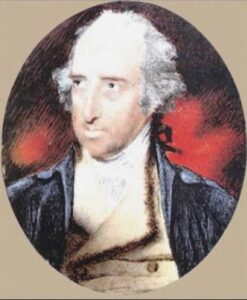
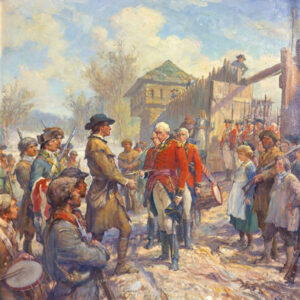
When a Native American raiding party attempted to return to the fort from the Ohio Valley, Clark’s men killed or captured all of them. The public tomahawk executions served upon five of the captives frightened the British, assuming that theirs might be a similar fate in Clark’s hands. When the British surrendered to Clark’s men, the Native Americans understood fully that they could no longer rely on the British to protect them from the Patriots. The British finally understood too, that they were no match for the determined patriots. The United States was finally free of the British.

